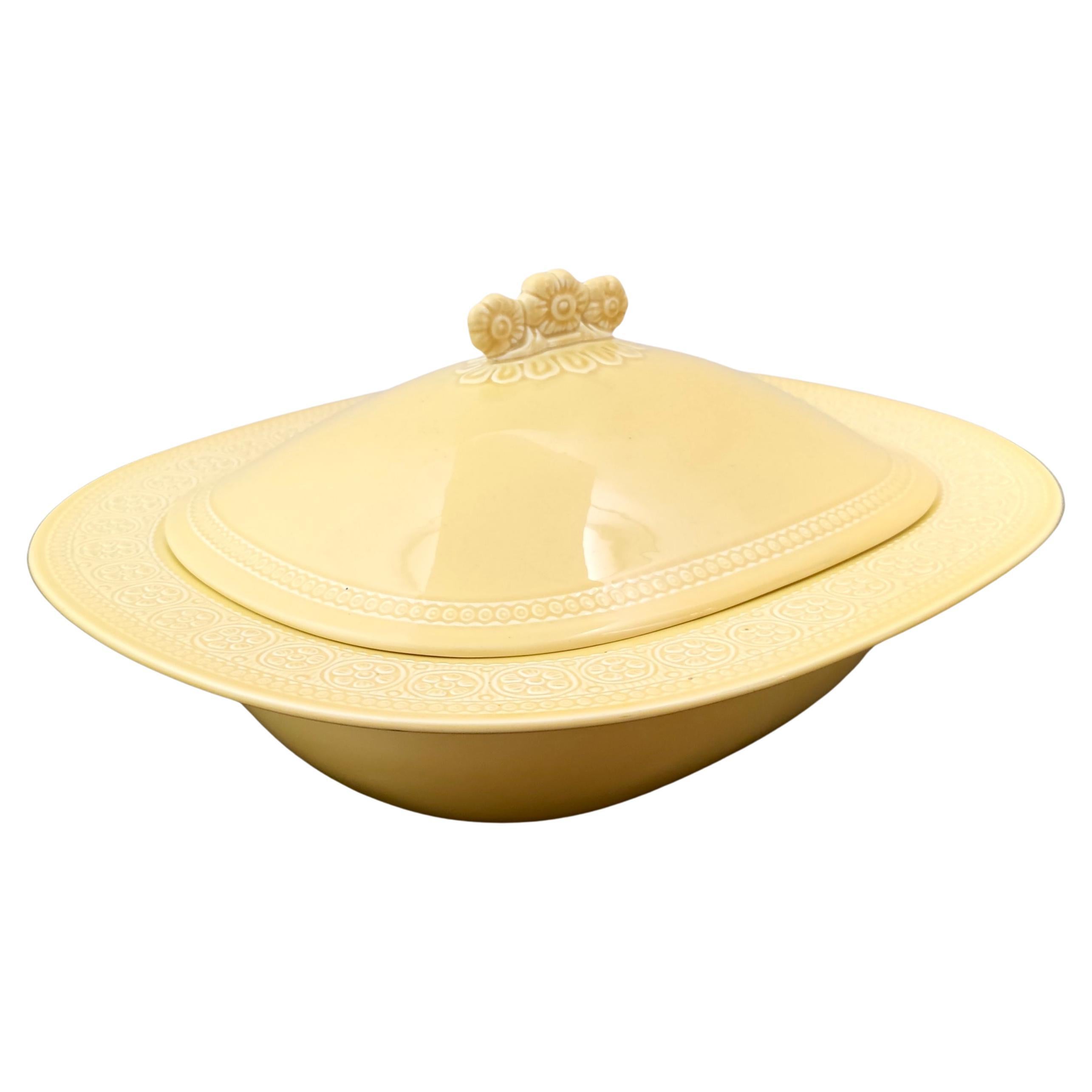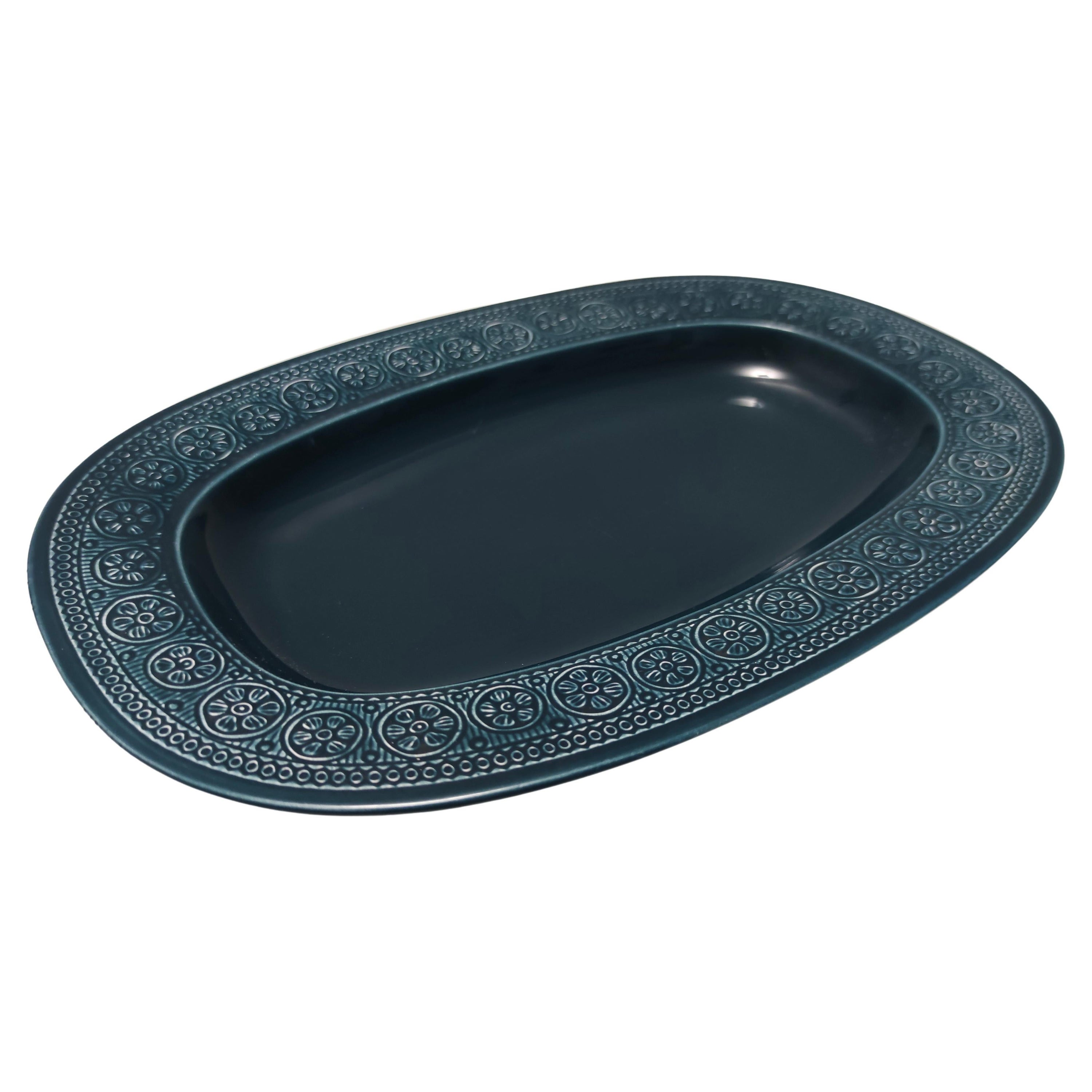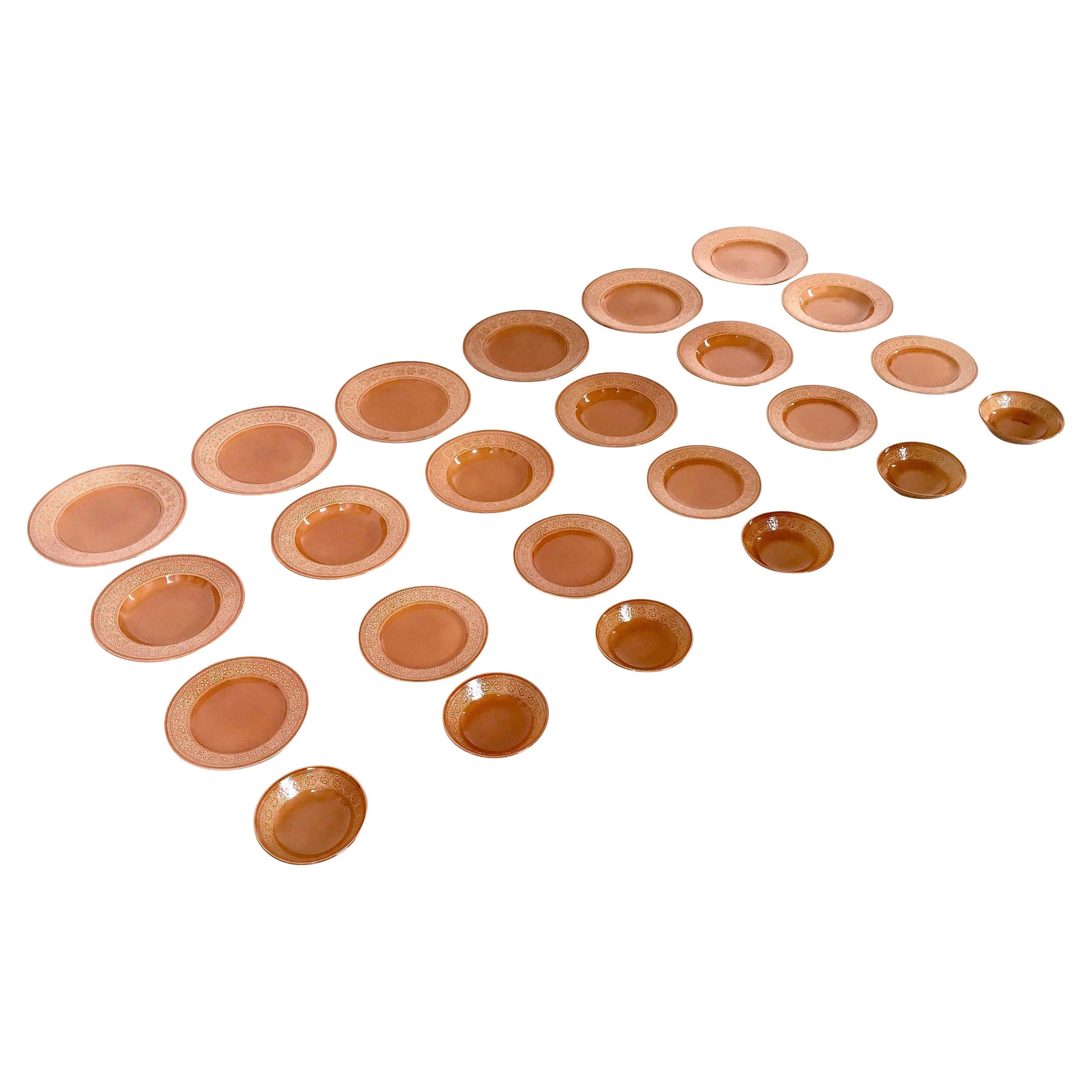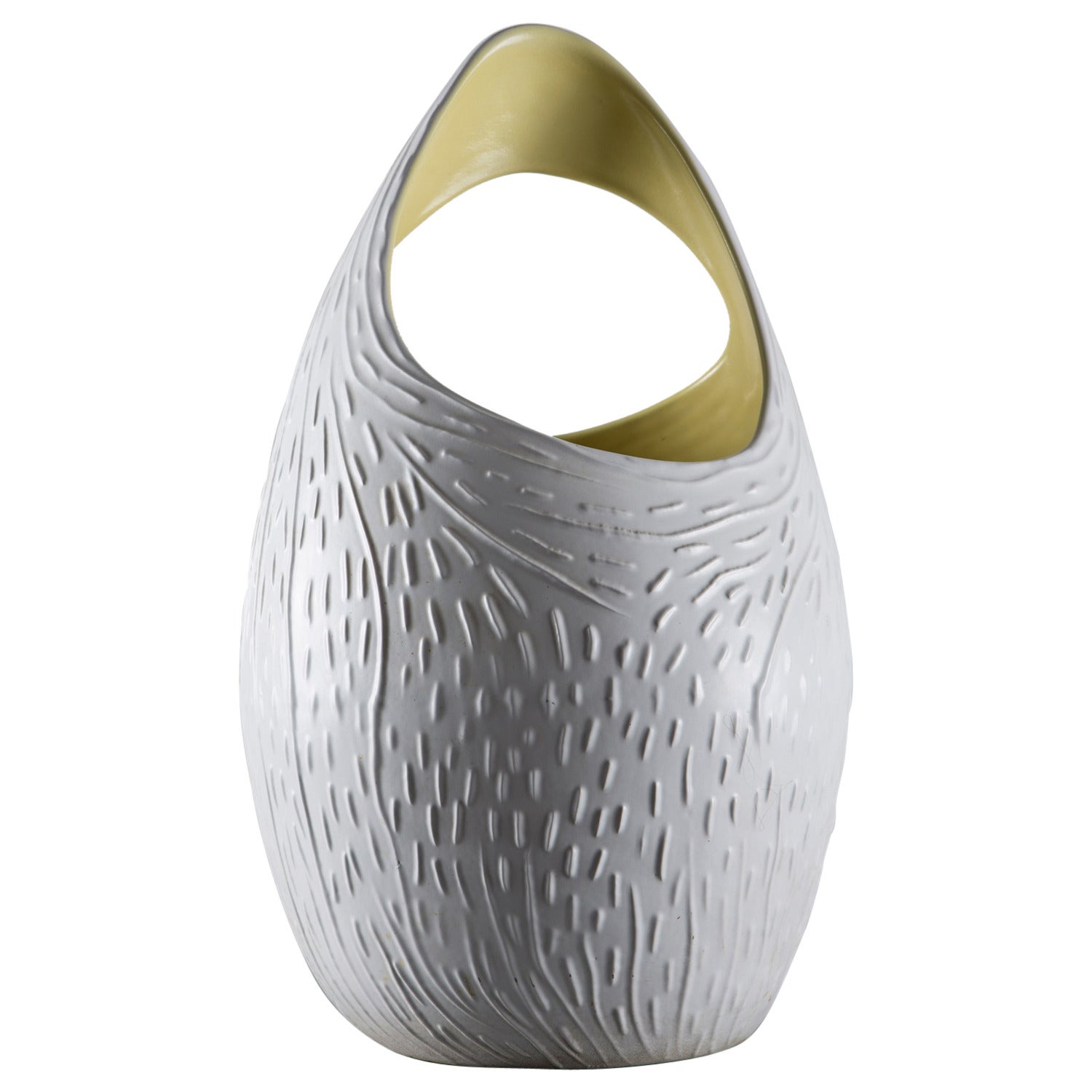Items Similar to Antonia Campi Tea Service for Six in Porcelain and Gold by Laveno 1950s
Want more images or videos?
Request additional images or videos from the seller
1 of 16
Antonia Campi Tea Service for Six in Porcelain and Gold by Laveno 1950s
About the Item
Rare ceramic tea service for six in a very elegant light blue shade with decoration refined in pure gold, it was designed by Antonia Campi and manufactured by Laveno Ceramica in Verbano during the early 1950s.
This set is composed of six (6) teacups, six (6) tea saucers, one (1) sugar bowl, one (1) teapot, and one (1) milk jug.
Measurements:
-Six cups 6 x 8 x 5.5 cm (each)
-Sugar bowl 9 x 12 x 7 cm
-Teapot 19 x 16, 5 x 9.5 cm
-Milk Jug 11 x 12 x 7 cm.
In 1856 Carlo Caspani, Alessandro Carnelli, and Severino Revelli, three employees of the Richard Ginori ceramics factory in Milano, set up the Società Ceramica C.C.R. making use of a disused building that had been a glass factory near the lakeshore. Production mainly consisted in fine earthenware and fire bricks.
One of the key choices for the success of this initiative was an industrial-scale production of low-cost earthenware for domestic use.
The manufacture of Laveno was gaining reputation; so that in 1869 part of its activity had to be moved to a new building called “Lago”.
In 1883 it adopted a new denomination, Società Ceramica Italiana (with an S.C.I. trademark) that was to become famous.
During this period, S.C.I. was led by bright managers: Tommaso Bossi and his successor Luciano Scotti, a graduate in engineering who led the company all the time from 1895 to 1956, raising it to its top level of capacity and production.
In 1925 the Mulini plant was built in the Boesio area, where the blends and ''bodies'' were prepared. The Magazzini Generali (a warehouse), were also built and directly connected to the railway network. All the factory sites were interconnected by a “Decauville” railway for transporting materials. Also in 1925 the Verbano plant was built, following an agreement with the German Rosenthal company, for producing porcelain tableware and, later, ceramic insulators.
The drive for innovation in production technologies, that took place during the Twenties, was accompanied by an equally intense artistic development. During the twenty's the architect Piero Portaluppi started collaborating with S.C.I. and thanks to Luciano Scotti’s foresight, young Guido Andlovitz, who had entered the company in 1923, was appointed art director in 1925, who introduced a renewal in the style of shapes and decorations, so that towards the end of the 1920s Ceramica di Laveno competed with Richard-Ginori, for the leading position in the ceramic art of Italy.
Near the end of the 1930s, collaboration was started with Angelo Biancini, who created a new product line of artisan taste.
In the late Forties, the young Antonia Campi joins the company as a decoration worker. Immediately, Guido Andlovitz notes her ability and potential qualities, and moves her into the artistic department. Starting with her 1948 first tiny vase, she designs hundreds of objects of extraordinary artistic value and innovative character in less than a decade, becoming one of the best-known ceramic designers.
In 1950 the first continuous fuel oil fired kiln for production of porcelain was started in the same time, a new plant (named “Ponte”) was built and dedicated to large-scale production of stoneware objects for home use.
Stoneware production was the main division in the Società Ceramica Italiana di Laveno, the technical updating has supported by a company research department and by the well-trained workers prepared by an internal formation school, established to provide S.C.I. workers a technical and practical training that allowed them to specialize in the ceramics craft.
Beyond the Studies Center Studi and the Formation School, a planning department gathered artists and designers under the skilled guidance of Guido Andlovitz and then Antonia Campi, to develop aesthetic research on shapes and decorations, leading to creation of valuable artistic ceramic objects.
- Creator:S.C.I. Laveno (Manufacturer),Antonia Campi (Designer)
- Dimensions:Height: 7.49 in (19 cm)Width: 6.5 in (16.5 cm)Depth: 3.75 in (9.5 cm)
- Style:Mid-Century Modern (Of the Period)
- Materials and Techniques:
- Place of Origin:
- Period:
- Date of Manufacture:1950s
- Condition:Wear consistent with age and use.
- Seller Location:Montecatini Terme, IT
- Reference Number:1stDibs: LU5304222658362
About the Seller
4.9
Gold Seller
These expertly vetted sellers are highly rated and consistently exceed customer expectations.
1stDibs seller since 2020
100 sales on 1stDibs
Typical response time: <1 hour
- ShippingRetrieving quote...Ships From: Florence, Italy
- Return PolicyA return for this item may be initiated within 7 days of delivery.
More From This SellerView All
- Gio Ponti Cutlery Set for Six in Nickel Silver by Krupp Italy 1950sBy Arthur Krupp, Gio PontiLocated in Montecatini Terme, ITTan France Pick Cutlery silver service for six in nickel silver or German silver, this set includes a total of 18 pieces; 6 spoons, 6 forks, and 6 knives with a steel blade. Set d...Category
Vintage 1950s Italian Mid-Century Modern Tableware
MaterialsNickel, Stainless Steel
- Chandelier in Lacquered Aluminum and Brass by Lumen Milano 1950sBy Lumen CenterLocated in Montecatini Terme, ITChandelier with structure and brass details, lampshade in lacquered aluminum. This beautiful vintage chandelier includes the five light bulbs as a decorative elements which perfectl...Category
Vintage 1950s Italian Mid-Century Modern Chandeliers and Pendants
MaterialsAluminum, Brass
- Ezio Longhi Mitzi Armchair in Black Wood and Red Velvet for Elam Italy 1950sBy Elam, Ezio LonghiLocated in Montecatini Terme, ITMid-century modern Mitzi armchair with a black ebonized wooden structure, seat, and, back upholstered with a bright red velvet. Designed by the Italian designer Ezio Longhi for E...Category
Vintage 1950s Italian Mid-Century Modern Armchairs
MaterialsVelvet, Wood
- Midcentury Table Lamp in Black Glass and Fabric Lampshade by Stilnovo, 1950sBy StilnovoLocated in Montecatini Terme, ITMidcentury table lamp with structure in black glass and brass and lampshade in fabric. Produced by the Italian company Stilnovo during the 1950s. The manufacturer's logo is stampe...Category
Vintage 1950s Italian Mid-Century Modern Table Lamps
MaterialsBrass
- Franco Albini TL30 Round Table in Metal and Wood for Poggi Pavia 1950s ItalyBy Franco Albini, PoggiLocated in Montecatini Terme, ITRound table model TL30 with black lacquered metal base and a wooden top. Designed by Franco Albini for Poggi, Pavia in 1950s. After spending his childhood and part of his youth in Robbiate in Brianza, where he was born in 1905, Franco Albini moved with his family to Milan. Here he enrolled in the Faculty of Architecture of the Polytechnic and graduated in 1929. He starts his professional activity in the studio of Gio Ponti and Emilio Lancia, with whom he collaborates for three years. He probably had his first international contacts here In those three years, the works carried out are admittedly of a twentieth-century imprint. It was the meeting with Edoardo Persico that marked a clear turning point towards rationalism and the rapprochement with the group of editors of “Casabella”. The new phase that that meeting provoked starts with the opening of the first professional studio in via Panizza with Renato Camus and Giancarlo Palanti. The group of architects began to deal with public housing by participating in the competition for the Baracca neighborhood in San Siro in 1932 and then creating the Ifacp neighborhoods: Fabio Filzi (1936/38), Gabriele D’Annunzio and Ettore Ponti (1939). Also in those years Albini worked on his first villa Pestarini. But it is above all in the context of the exhibitions that the Milanese master experiments his compromise between that “rigor and poetic fantasy” coining the elements that will be a recurring theme in all the declinations of his work – architecture, interiors, design pieces . The opening in 1933 of the new headquarters of the Triennale in Milan, in the Palazzo dell’Arte, becomes an important opportunity to express the strong innovative character of rationalist thought, a gym in which to freely experiment with new materials and new solutions, but above all a “method”. Together with Giancarlo Palanti, Albini on the occasion of the V Triennale di Milano sets up the steel structure house, for which he also designs the ‘furniture. At the subsequent Triennale of 1936, marked by the untimely death of Persico, together with a group of young designers gathered by Pagano in the previous edition of 1933, Franco Albini takes care of the preparation of the exhibition of the house, in which the furniture of three types of accommodation. The staging of Stanza per un uomo, at that same Triennale, allows us to understand the acute and ironic approach that is part of Albini, as a man and as a designer: the theme addressed is that of the existenzminimum and the reference of the project is to the fascist myth of the athletic and sporty man, but it is also a way to reflect on low-cost housing, the reduction of surfaces to a minimum and respect for the way of living. In that same year Albini and Romano designed the Ancient Italian Goldsmith’s Exhibition: vertical uprights, simple linear rods, design the space. A theme, that of the “flagpole”, which seems to be the center of the evolution of his production and creative process. The concept is reworked over time, with the technique of decomposition and recomposition typical of Albinian planning: in the setting up of the Scipio Exhibition and of contemporary drawings (1941) the tapered flagpoles, on which the paintings and display cases are hung, are supported by a grid of steel cables; in the Vanzetti stand (1942) they take on the V shape; in the Olivetti store in Paris (1956) the uprights in polished mahogany support the shelves for displaying typewriters and calculators. The reflection on this theme arises from the desire to interpret the architectural space, to read it through the use of a grid, to introduce the third dimension, the vertical one, while maintaining a sense of lightness and transparency. The flagpole is found, however, also in areas other than the exhibition ones. In the apartments he designed, it is used as a pivot on which the paintings can be suspended and rotated to allow different points of view, but at the same time as an element capable of dividing spaces. The Veliero bookcase...Category
Vintage 1950s Italian Mid-Century Modern Dining Room Tables
MaterialsMetal
- Gio Ponti Silver Cutlery Set for Twelve by Krupp Italy 1950sBy Arthur Krupp, Gio PontiLocated in Montecatini Terme, ITCutlery silver set for twelve in nickel silver or German silver, this set includes a total of 36 pieces; 12 spoons, 12 forks, and 12 knives with a steel blade. Set designed by Gio ...Category
Vintage 1950s Italian Mid-Century Modern Tableware
MaterialsNickel, Stainless Steel
You May Also Like
- Vintage Yellow Earthenware Serving Centerpiece by Antonia Campi for Laveno ItalyBy S.C.I. Laveno, Antonia CampiLocated in Bresso, LombardyMade in Italy, 1965. This centerpiece bowl is made in yellow lacquered earthenware with bossed decorations. This is a vintage item, therefore it might show slight traces of use, but...Category
Vintage 1960s Italian Mid-Century Modern Serving Pieces
MaterialsEarthenware
- Vintage Blue Earthenware "Margherita" Tray by Antonia Campi for Laveno, ItalyBy S.C.I. Laveno, Antonia CampiLocated in Bresso, LombardyMade in Italy in 1965 by Antonia Campi for Laveno. It is marked on the bottom. This tray is made in blue lacquered earthenware with bossed decorations. It is a vintage item, therefo...Category
Vintage 1960s Italian Mid-Century Modern Serving Pieces
MaterialsEarthenware
- 24-Piece Earthenware Dinner Set "Margherita" by Antonia Campi for Laveno, 1965By S.C.I. Laveno, Antonia CampiLocated in Bresso, LombardyMade in Italy, 1965. It is made is in lacquered earthenware with embossed decorations. This is a vintage set, therefore it might show slight traces of use, but it can be considered a...Category
Vintage 1960s Italian Mid-Century Modern Dinner Plates
MaterialsEarthenware
- Antonia Campi C5 vase for SCI LavenoBy Antonia CampiLocated in Milan, ITA beautiful C5 vase by Antonia campi. Decorated probably at a later date with flowers and butterfy Fully signedCategory
Vintage 1940s Italian Mid-Century Modern Ceramics
MaterialsCeramic
- Ceramic Umbrella Stand Model C300 by A. Campi for S.C.I. Laveno, Italy, 1950sBy S.C.I. Laveno, Antonia CampiLocated in Milan, ITUmbrella stand model C300 by Antonia Campi for S.C.I. Laveno. Rare bicolor version of this sculptural piece.Category
Vintage 1950s Italian Ceramics
MaterialsCeramic
- Antonia Campi 1950s Italian VaseBy Lavenia, Antonia CampiLocated in New York, NYAn Antonia Campi for Lavenia pale yellow sculptural ceramic vase.Category
Vintage 1950s Italian Mid-Century Modern Pottery
MaterialsCeramic
Recently Viewed
View AllMore Ways To Browse
Gold Service
Used Gold Sets
Retro Kitchen Decorations
Vintage Tea Services
Vintage Tea Service
Tea Set For One
Tea Light
Rare Tea Set
Tea For 12
Gold Silver Blend
Pure Silver Set
Vintage Cup Of Tea
Silver On Porcelain Tea Sets
Blue Tea Set
Vintage Style Tea Sets
7 Up Glasses Vintage
Vintage 7 Up Glasses
Vintage 7 Up Glass





